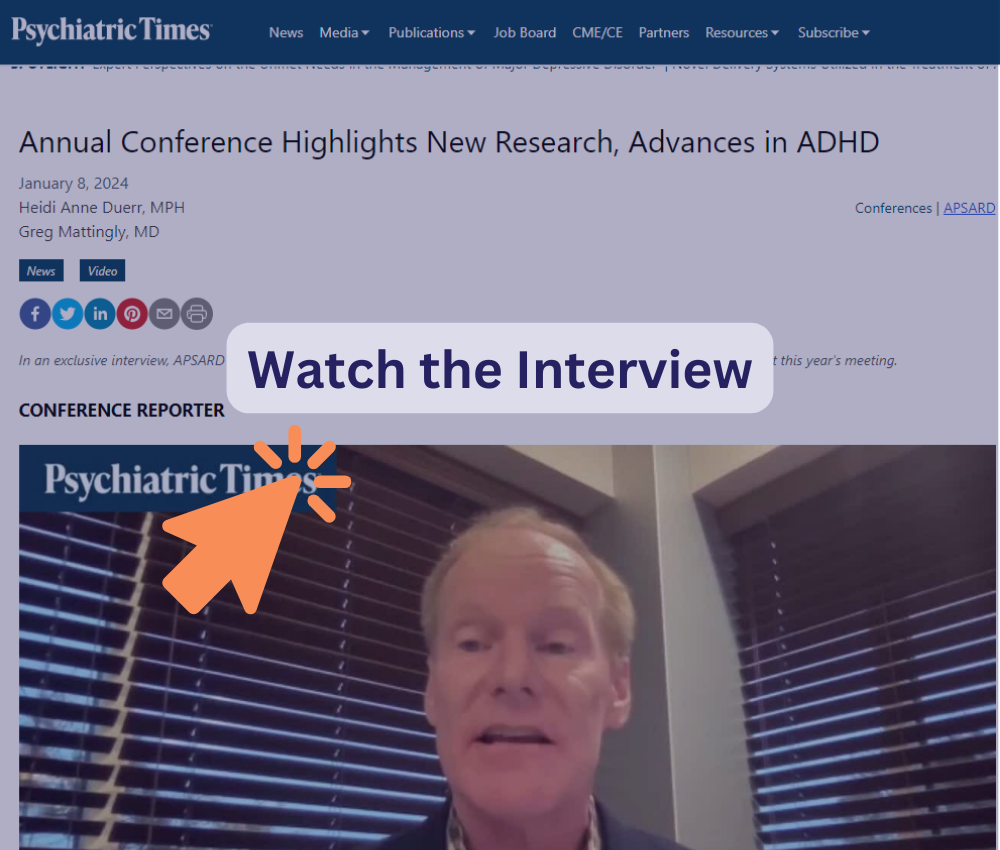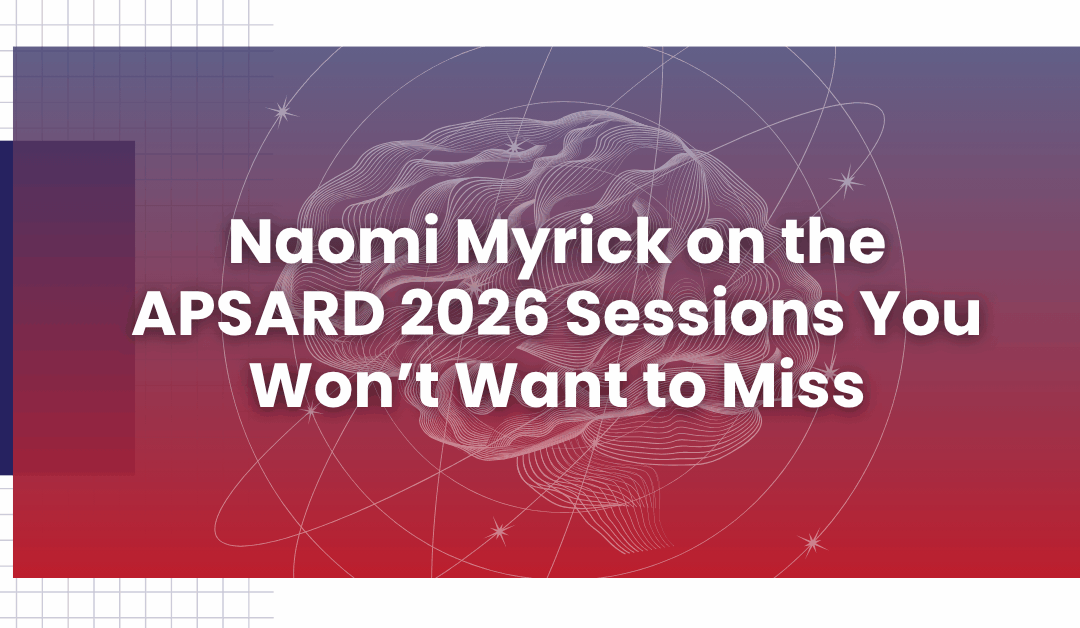


APSARD 2024: A Huge Success
The members are the judges! From the feedback we’ve heard, APSARD 2024 went very well with a strong line-up of presenters sharing interesting and important science.
From attendees:
- Excellent conference, both in content and the quality
- Great speakers; great information; wonderful to socialize and meet people; delicious food.
- Speakers were very informative and loved that they were able to relate to the audience.
Here are some highlights:
An update on the Adult ADHD Diagnosis and Treatment Guidelines process was shared Friday morning by Dr. David Goodman and audience questions were received for consideration in the ongoing process. This is an important initiative, and the committee was grateful that APSARD members were able to share some of their thoughts. See here for the latest news on the guidelines development.
Drs. Maggie Sibley and Luis Rohde provided stimulating presentations on the complexities of ADHD in adulthood that are especially pertinent given the prevalence trends in the literature documenting dramatically increased prescribing for adults and especially women. Multiple factors are important to consider including the fluctuating course of ADHD throughout life and the impact, both positive and negative, of social media on ADHD awareness. A clinical take-home point is that assessment in adulthood is complicated by the need to rule out multiple alternative and co-occurring causes of ADHD symptoms; thorough assessments are critical.
Dr. Susan Young delivered a lecture on ADHD experienced by women with an emphasis on distinct clinical presentations important for consideration in diagnosis and treatment underscored by personal narratives shared by the women in her research. Recognizing the more subtle and internalized presentation of ADHD amongst women, and individualizing treatment goals, is important.
Drs. Brooke Molina and Tim Wilens presented recent data on connections between stimulant treatment, misuse, and risk of other harmful substance use, showing an absence of harmful substance use in adulthood amongst children treated with stimulants for ADHD yet increased risk when stimulant treatment is initiated in adolescence and especially in the presence of stimulant misuse. The findings underscore the need for monitoring of substance use risk when stimulant prescribing is initiated at older ages.
Drs. David Coghill, Steve Faraone, and Luis Rohde provided very interesting international perspectives on the implications of, and necessity for, national guidelines on the diagnosis and treatment of ADHD. The discussion provided insight into differences across countries in diagnosis and treatment cultures, service availability, and policies that drive availability of evidence-based care.
Drs. Brandy Callahan and David Goodman presented the state of the science on cognitive aging and ADHD, helping the audience understand the complexities of diagnosis in older age as well as the increased risk of accelerated brain aging amongst individuals with ADHD. Assessments should include a thorough medical evaluation to consider all possible causes of cognitive complaints before diagnosing ADHD, but once diagnosed, ADHD treatments can be just as effective for older adults as for younger adults.
From several more attendees:
- Good meeting – appeals to many health care providers
- Provides the chance to network with colleagues with deep interest in ADHD.
- Relevant, cutting-edge information, great speakers. Very friendly atmosphere.
- Speakers and topics were so informative and thought provoking – each talk was directly relevant to my practice.
APSARD has been very fortunate to include international perspectives throughout our meetings and the 2024 meeting was no exception with other talks including representation from Japan (Drs. Gail Tripp, Emi Furukawa, Patricia Bado, & Shizuka Shimabukuro), in addition to presenters noted earlier (Callahan, Canada; Coghill, Australia; Rohde, Brazil; Young, UK). Clinically, it is clear that cultural differences in perspectives about mental health can and should be taken into account when diagnosing and treating ADHD. Training in cultural competence is one important way for clinicians to accomplish this (e.g., Center of Excellence for Cultural Competence).
Drs. Faraone, Angelika Claussen, and Melissa Danielson provided updates from the CDC on trends in care utilization and medication use by adults with ADHD and underscored the need for additional research on underserved populations and education for people with ADHD, their families, and their healthcare providers.
In addition to these invited presentations, multiple symposia were extremely well-attended and led to lively conversations about ADHD and cannabis use, developing parenting interventions in Japan, understanding the comorbidity of reading disorders and ADHD, medication selection for adults with ADHD in light of psychiatric comorbidities, the role of sleep in ADHD and comorbidities, school interventions in the digital era, advances in digital therapeutics, advances in models of clinical care delivery for children with ADHD, and the association between ADHD and genetically driven inflammatory disorders. ADHD 201, held pre-conference on Thursday, was standing room only and will definitely be in a bigger space next year!
Finally, the meeting was filled with stimulating conversation across disciplines, with clinicians and researchers informing one another with their perspectives and questions. Relatedly, Table Talk and the Special Interest Group meetings were well-attended and will be continued at APSARD 2025 in San Diego where we hope to continue these conversations!
More feedback:
- This is by far one of the best conferences that I have ever been too that is research based, and I love that.
From a new attendee nurse practitioner (NP):
- Since the conference, I’ve had the opportunity to speak with several colleagues about the benefits of APSARD membership and many are interested. This organization has already influenced my practice in such a positive way – I am excited to play a role in helping to spread this positive influence. Especially to my NP colleagues of color.

Brooke Molina, PhD
APSARD Program Planning Committee Chair, 2024

APSARD 2024 Election Results
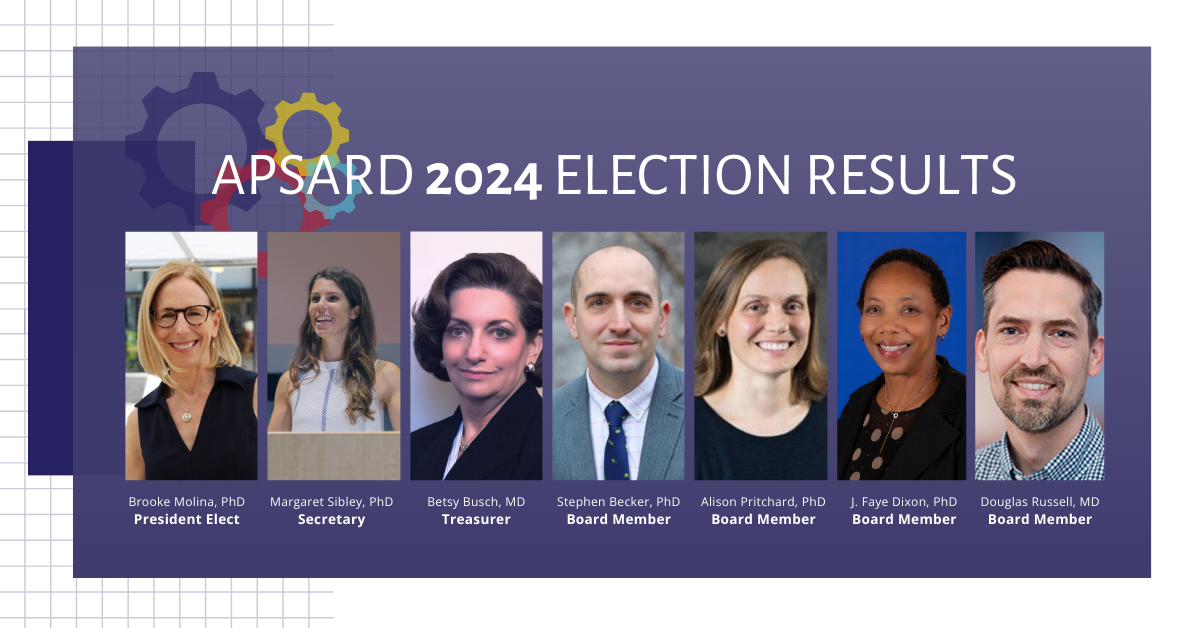
We are delighted to announce the results of our 2024 board elections, marking a significant transition in leadership. As we extend our appreciation to the outgoing board members, we are excited to welcome the newly elected individuals:
- Brooke Molina, PhD – President Elect
- Margaret Sibley, PhD – Secretary
- Betsy Busch, MD – Treasurer
- Stephen Becker, PhD – Board Member
- Alison Pritchard, PhD – Board Member
- J. Faye Dixon, PhD – Board Member
- Douglas Russell, MD – Board Member
A thank you to the outgoing members who have played a pivotal role in shaping APSARD:
- Sam Goldstein, PhD
- Martin Katzman, MD
- Mark Bertin, MD
- Jeffrey Newcorn, MD
- David Goodman, MD
- Beth Krone, PhD
APSARD is thrilled to have a diverse group of experts with a wealth of knowledge and dedication to steering our organization toward continued success in the new year!
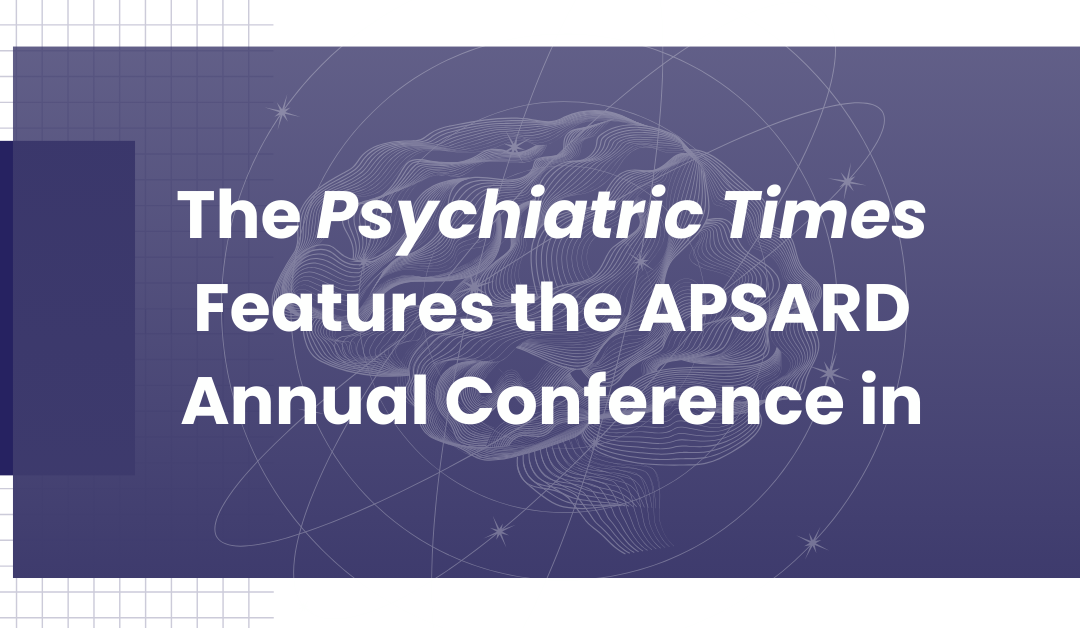
Late Breaking News From APSARD 2024 Conference
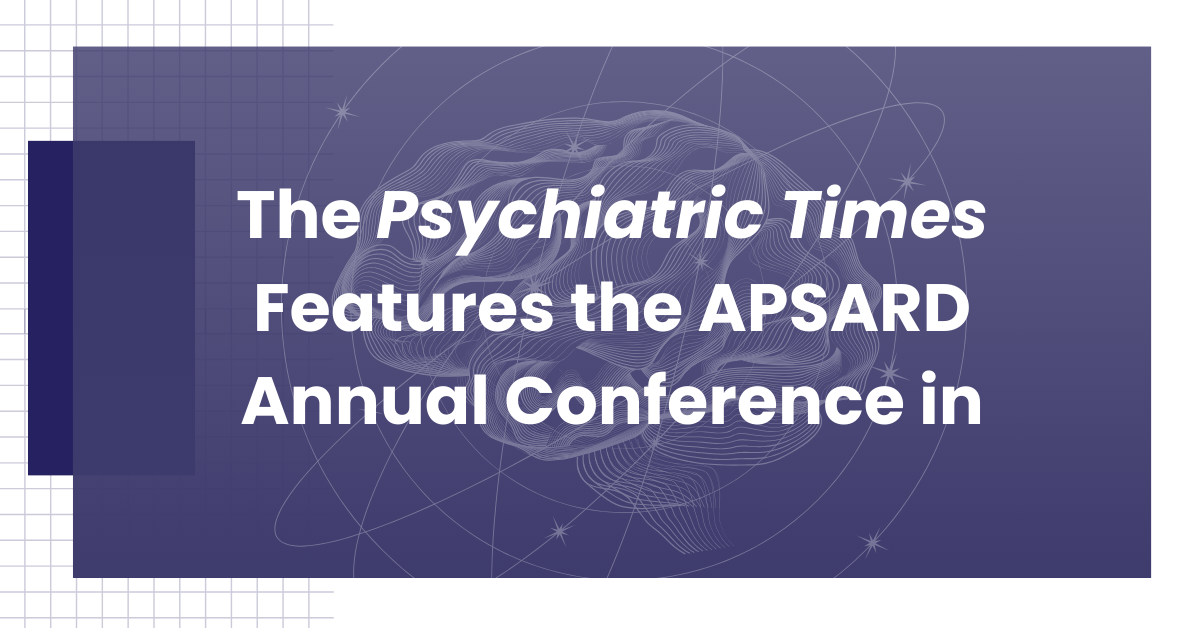
The Psychiatric Times has highlighted the 2024 APSARD Annual Conference in a featured article. This piece provides a concise overview of the sessions conducted by APSARD’s Executive Committee Members on the first day, featuring presentations from experts such as Greg Mattingly, M.D., David Goodman, M.D., L.F.A.P.A., Margaret Sibley, Ph.D., Ann Childress, M.D., and Jeff Newcorn, M.D.
Explore the insightful summaries by clicking here.
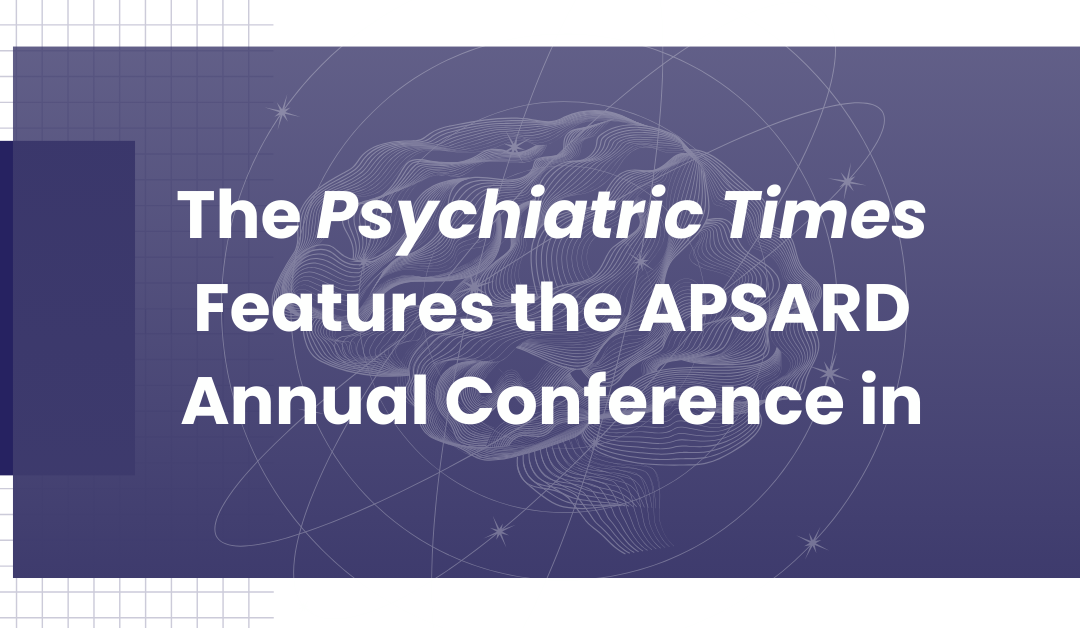
An Interview with Gregory W. Mattingly, MD, President Elect in the Psychiatric Times

We, at APSARD, are eagerly anticipating the kick-off of our 2024 conference in Orlando, Florida, on January 18th! This year’s conference promises to be even more exciting and informative than ever before, with a focus on ADHD across special populations, groundbreaking research, and practical tools for clinical practice.
To learn more about what you can expect from the APSARD 2024 conference, be sure to watch this interview with APSARD President-Elect Dr. Gregory W. Mattingly. In this interview, Dr. Mattingly discusses the conference’s highlights, why he’s so excited about this year’s event, and how APSARD is working to improve outcomes for individuals with ADHD.
Watch the interview by clicking the preview.
Vallon Pharmaceuticals Presents Positive Data from Pilot Intranasal Human Abuse Study of Its Investigational Abuse Deterrent Stimulant, ADAIR, at the American Professional Society of ADHD and Related Disorders (APSARD) Annual Meeting
Vallon Pharmaceuticals Presents Positive Data from Pilot Intranasal Human Abuse Study of Its Investigational Abuse Deterrent Stimulant, ADAIR, at the American Professional Society of ADHD and Related Disorders (APSARD) Annual Meeting
– According to reports from the US Department of Health and Human Services, more than 5 million Americans misuse or abuse prescription stimulants annually
– ADAIR is a novel, patented formulation of dextroamphetamine under development for the treatment of ADHD and narcolepsy that is designed to deter attempts to crush and snort it or take it by other non-oral routes that can produce a greater “high”
PHILADELPHIA–(BUSINESS WIRE)–Vallon Pharmaceuticals Inc., a specialty pharmaceutical company focused on the development of novel drugs for CNS disorders, today announced the presentation of positive data from a pilot study assessing human abuse liability for its investigational Abuse Deterrent Amphetamine Immediate Release (ADAIR). The data were presented this weekend at the 2020 American Professional Society of ADHD and Related Disorders (APSARD) Annual Meeting in Washington, D.C. ADAIR, the Company’s lead investigational new drug, is in development for the treatment of attention deficit hyperactivity disorder (ADHD) and narcolepsy.
The poster, titled, “A Pilot Human Abuse Potential Study in Recreational Stimulant Drug Users Assessing Safety, Pharmacokinetics and Abuse Liability of Intranasally Administered Manipulated ADAIR and Dextroamphetamine Sulfate Tablets,” reported data from an intranasal (snorting) clinical trial of ADAIR, Vallon’s novel formulation of immediate release dextroamphetamine. The results of this 16-subject trial (VAL-103) demonstrated that intranasal administration of manipulated ADAIR was generally well tolerated, with all adverse events considered mild or moderate, and no new safety or tolerability signals identified. In this crossover comparative study, as compared to crushed and snorted dextroamphetamine sulfate, ADAIR demonstrated a blunted pharmacokinetic profile (lower Cmax, delayed Tmax, and lower AUC, especially during the early hours after administration). In addition, as compared to dextroamphetamine sulfate, even after extensive manipulation, ADAIR, when snorted, was less desirable to recreational drug abusers on key measures of abuse liability, in particular the Emax drug-liking scale (primary pharmacodynamic endpoint).
“Results from this pilot study suggest that Vallon’s investigational immediate release stimulant, ADAIR, may demonstrate less abuse potential than standard dextroamphetamine when manipulated and misused intranasally,” said Dr. Timothy Whitaker, a board-certified psychiatrist and Vallon’s Chief Medical Officer. “We appreciate the opportunity to present these findings to the attendees at APSARD, many of whom are at the forefront of ADHD research and patient care.”
According to reports from the US Department of Health and Human Services, more than 5 million Americans misuse or abuse prescription stimulants annually, most commonly teenagers and young adults. Separate studies report that approximately 40% of people who misuse prescription stimulants do so by snorting them.
“While we plan to consult with the FDA and conduct additional clinical trials, the data presented at APSARD, combined with market research feedback from physicians who treat ADHD and parents of teenagers and young adults who are prescribed ADHD stimulants, suggest that ADAIR, if approved, could be an important addition to available treatments for ADHD,” said David Baker, President & Chief Executive Officer of Vallon.

